Table of Contents
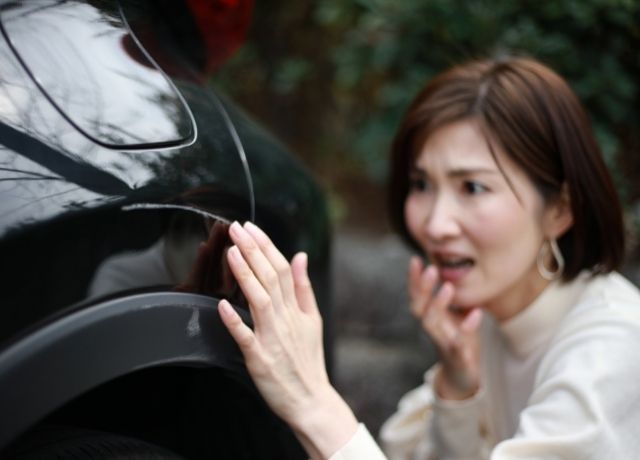
Cars are expensive pieces of machinery, and as such, they should be treated with respect. Unfortunately, not all drivers take this into account. They end up with a lot of scratches on the car since they don’t take adequate care of it. This can damage the paintwork and ultimately lead to a costly repair.
Car scratches are common and can come from many sources, including everyday wear and tear, the environment, accidents, or another person’s careless actions. Though they may not seem like much, they can be very costly, depending on the severity.
Luckily, there are some remedies for the types of scratches on cars that don’t need to break the bank. It’s essential to know the difference between types of car scratches to decide what type of fix will work best for you. Before we start, you must understand the paint layers on the cars.

Paint Layers Of The Car:
Car paint is what makes your car stand out from the rest, but many people don’t realize that paint is not done in a single layer. Different layers of paint provide different levels of protection from the elements. There are four layers in which the paint job is done on your car.
Body/Steel:
The first layer is not a layer; It is the body of your car. The body of the vehicle is usually made of metal/steel that is highly reactive to the surrounding, which can lead to rust, layer after layer.
Whereas, there are some cars in which aluminum is used to create their bodies. Aluminum can also lead to corrosion due to oxidation.
No matter what your car body is made up of, there will always be the need to paint your car for protection. And the process starts with the second layer, i.e., primer.
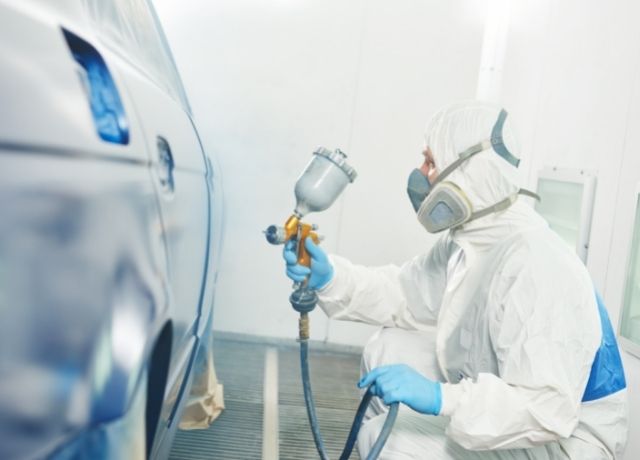
Primer:
When you’re painting a car, the primer layer is essential. This is a thin, clear coat of paint layer that goes on first, and it’s responsible for creating a smooth surface for the paint to adhere to. If you try to paint over a rough surface, the paint will chip and peel off. The primer also helps to hide any imperfections on the surface of the car body.
Primers adhere to any surface and help remove any imperfections in the metal, which could cause rusting if they weren’t covered up. Primers also provide a protective barrier for cars that helps keep them looking new over time.
However, paint won’t stick to it without a primer layer and will wear off quickly. It’s essential not to skip this step as it prevents rust and corrosion from occurring.
Color/Base Coat:
There are three layers of paint that are applied to a car: the base coat, the color coat, and the clear coat. The base coat is the middle layer and it lays down an even, level surface that will accept other layers of paint.
For example, an automotive primer is the first layer of paint applied to metal or plastic parts before being painted or clear-coated with color. A base coat on a car’s body should be done before applying any other colors.
A base coat is a layer of paint that provides a solid foundation for the final coat of paint on a vehicle. This is critical since it provides your vehicle with a distinct color. Colors and reflective characteristics can be added to a base coat to give it a more appealing appearance

Clear-Coat:
A clear coat is a topmost, yet often overlooked, layer of paint on your car. A clear coat is a thin layer of paint that provides a high level of protection for the underlying layers and helps to keep the car looking new for years. The clear coat also serves as a sealant, preventing moisture and other contaminants from damaging the car’s surface.
Clear coats are applied on top of a base color coat and will usually chip or peel after a few years from exposure to 26 harmful substances. It is important to keep the clear coat in good condition because if it starts to chip or peel, the underlying layers will be exposed and could start to rust.
Clear coats are typically made out of polyurethane, lacquer, acrylic, or epoxy that safeguards everything underneath.
Types Of Scratches On Cars And Their Fixes:
Now that we understand the different layers of car paint and their usage let’s find out the different types of scratches on cars, their causes, and possible fixes.
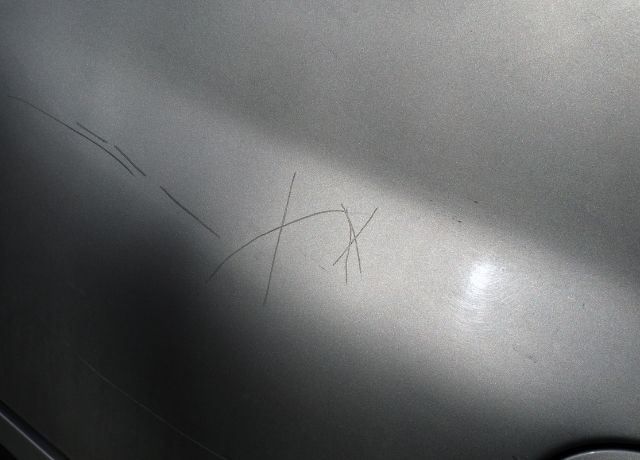
Clear Coat Scratch:
The clear coat sits atop the paint layers and gives your vehicle protection, gloss, and shine. Clear-Coat scratches are a common type of car scratches that happen to almost every car.
These type of scratches are often hard to see, but it does affect the overall look of your car’s paint job. You shouldn’t worry, though! They are a type of superficial scratches that are the easiest to fix.
Common Causes:
The biggest culprits of clear-coat scratches are improper car washes, which use a rough cloth to buff away dirt. Improper washing can also cause swirl marks, which are scratches that go in a circular pattern. Abrasive materials like grit or sand can also cause scratches.
The other potential causes are road grime and light accidents with other cars. Trees and grass on the road, sharp objects, and touching paint with hands can also cause them.
How To Fix These Types Of Scratches On Cars:
These types of car scratches are the easiest to fix. The scratches can be fixed with a good polish or scratch remover product that suits the color and type of paint. For example, if you have a white car, then use a white scratch remover that has been designed for white paint.
To get the best results, apply two or three thin layers of polish (recommended) and wait for each layer to dry between applications. Between coats, you’ll be able to buff out any defects with this method.
It will be easier to see things once you polish them because the dirt will be removed and the surface will be smoother. Keep in mind that a lasting coat of wax or sealant will help preserve the deep gloss and stunning paint job you’ve achieved thus far.
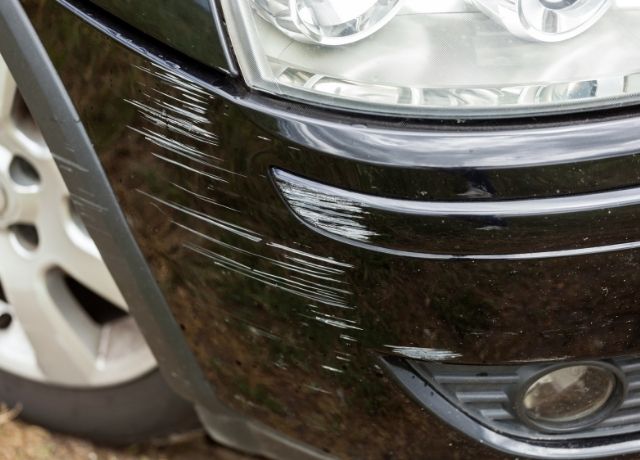
Paint/Color scratch:
Color coat is a layer that gives your car color. It stays underneath the clear coat. Paint coat scratches constitute a significant problem for car owners to deal with. These types of car scratches are costly and difficult to fix because they penetrate the clear coat and remove the color of your car.
These types of scratches make your car susceptible to damage because the only layer that now protects your vehicle is a primer layer. The earlier you handle the situation, the cheaper it will cost you; it will worsen with time.
Common Causes:
Paint scratches are often caused by heavy contact with hard objects, but they can also be caused by car accidents, improper car care, someone scratching your car on purpose using keys, etc. If you want to reduce the chance of your car being scratched, take special care of it and try to park your car in the garage.
How To Fix These Types Of Scratches On Cars:
Paint scratches are a different animal than clear coat scratches. You should never attempt to fix a paint scratch yourself, as the results will only end up costing you more money and time. This is because paint scratches go deeper into the paint than clear coat scratches do, making it impossible for anyone other than a professional to repair them successfully.
A professional can handle these types of car scratches with ease with the right tools and equipment.
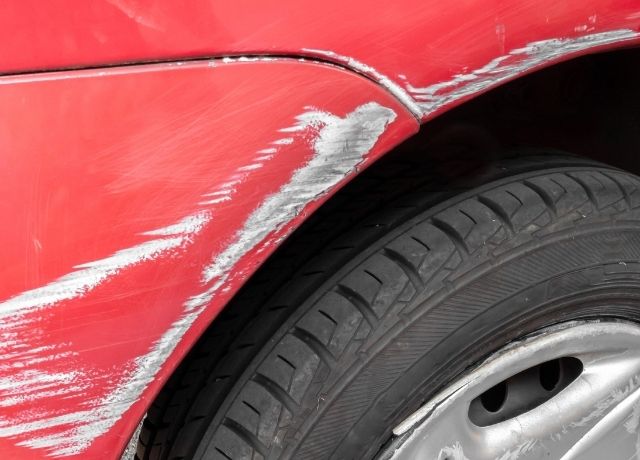
Primer Scratch:
Primer is the first layer of paint applied to the car body to prevent rusting. Primer scratches are the worst that can happen to your car. Primer scratches are the deepest type of scratches and can cause more damage beyond just the surface.
This is because it exposes the bare metal right under the primer, making it more susceptible to rust. Primer scratches should be fixed as soon as possible because they can lead to damages that can’t be fixed.
Common Causes:
There are many potential causes of primer scratches on your car. The two main reasons include accidents and scratching the car with some harsh metal. Drinking on rough roads can cause these types of scratches, but they are typically not severe.
Rock chips can also scratch vehicles if they are not protected with some type of coating. Likewise, the angle and weight of animals rubbing against the car can also lead to these types of scratches on cars.
How To Fix These Types Of Scratches On Cars:
Like paint scratches, primer scratches are difficult to fix without professional aid. You may end up worsening the problem. It is ideal for taking your car to a professional and letting him handle the situation.
However, If you have experience doing paint repair jobs, you can do this DIY project. Proceed with washing the car thoroughly. Once dried, cover the exposed parts with a suitable primer.
Make sure you sand the paint to the level of the scratch, then apply a primer. Apply a new layer of paint after it has dried. Afterward, apply a clear coat to protect your car from UV radiation and other dangerous substances.
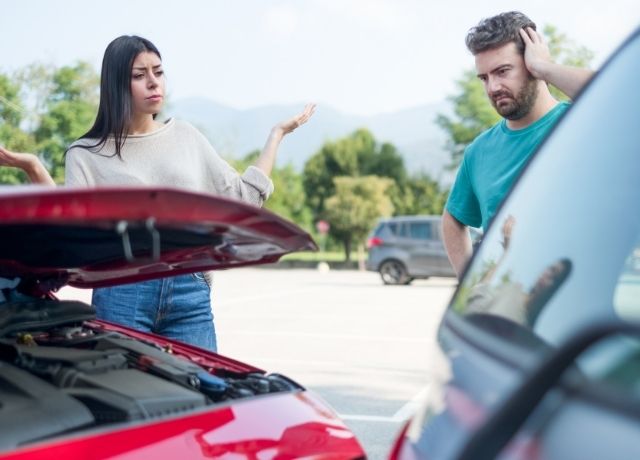
How Did My Car Get Scratched (Common Causes):
Car scratches are a common occurrence that can result from various issues. It’s easy to see why these scratches happen, from potholes to misaligned parking spaces or objects in the road. Here are the most common causes of car scratches:
Improper Washing:
When your car is being washed, the likelihood of it getting scratched goes up exponentially. This is because there are a number of common causes of car scratches that can happen during the wash. One of the most common causes is using the wrong type of brush or cloth to clean the car. If you use a brush that is too stiff, it can easily scratch the paint. The same is true for using a cloth that is too rough.
Likewise, during a car wash using too much pressure can easily cause swirl marks, which are difficult to see but can be felt. Finally, improper drying of the car also causes different types of scratches on cars. This can cause water spots, which are also difficult to remove and can damage the paint on your car.
Here are some tips to avoid car scratches while washing:
- Make sure to use a soft cloth and plenty of water when washing your car.
- Avoid using harsh chemicals or brushes when cleaning your car.
- Apply wax to protect the finish.
- Always dry your car off with a soft cloth after washing it to avoid water spots.

Accidents:
Accidents are one of the most common ways to get scratches on the car. Scratches can be caused in a variety of ways, including collisions. Car paint can be scratched by objects such as poles and trees when you hit them. Additionally, if you collide with another vehicle while driving, both vehicles will be damaged.
The intensity/depth of the types of scratches caused due to accidents depends on the impact between the objects.
Dirt And Debris From The Road:
It isn’t always an accident when your car gets scratched. It may not be the driver’s fault, but it could have been caused by dirt, leaves, or other debris on the road. The car in front of you can kick the dirt and debris into the air.
Which when hit your car leads to scratches on your vehicle. The worst thing is that you are helpless in such a situation. The best you can do is wash and wax the car more often.
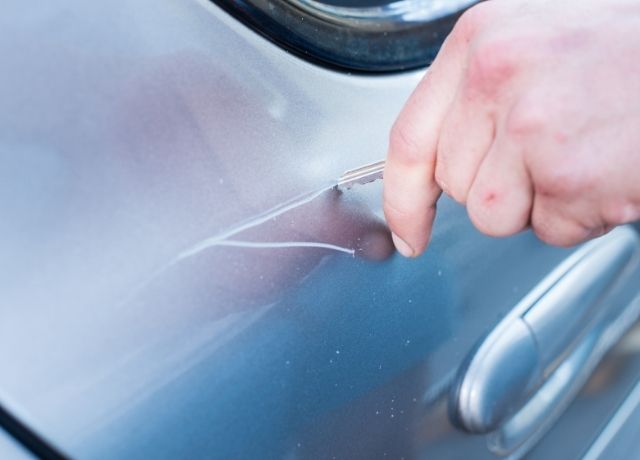
Intentional Acts:
Another obvious reason for scratches across your car. Intentionally, when an object is dragged across the surface of a car, it can cause scratches. The person can either press the object against the car, or drag it across the surface. This will cause the metal to scratch and leave marks on the paint.
These objects are usually sharp-edged such as keys.
How Did My Car Get Scratched (Other Causes):
- Rock chips
- Parking incidents
- Heavy objects on the car paint
- Vandalism
- Wrong loading of cargo on car rooftop
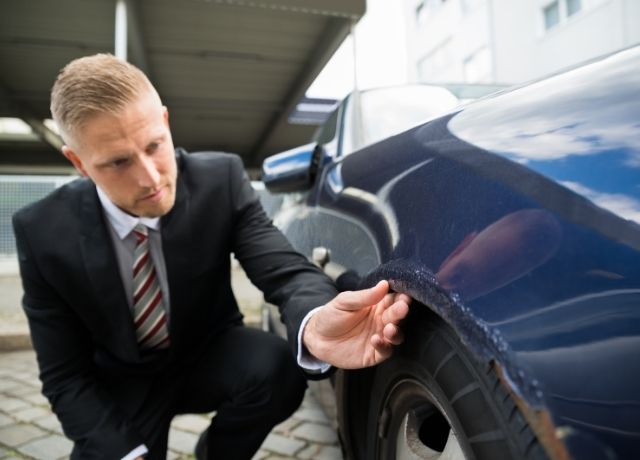
Frequently Asked Questions:
How Much Does It Cost To Remove The Types Of Scratches On Cars?
There are many types of scratches on cars, and each type requires a different level of work to remove. The cost for removing these scratches will depend on the type of scratch, the size, the depth, and the location.
When it comes to removing scratches, there are some that are more difficult than others. For example, eliminating a scratch close to the edge of a panel may necessitate the removal of paint.
Removing a scratch can cost more or less depending on whether you hire a professional or do it yourself. But on average, it costs between $100 and $2,000 to remove a scratch.
How To Prevent The Types Of Car Scratches?
Scratches on your car can be avoided in a variety of ways. To begin, apply a layer of wax or shine to your vehicle. When cleaning the car’s exterior, use a soft cloth instead of paper towels, which might harm the paint. Make sure you park far enough away from other vehicles so that they don’t collide with yours.
A car cover, which can be purchased at any auto store, can also be used to protect a vehicle when it is not in use. Avoid parking in dirt or gravel as a second method of preventing scratches on a vehicle. If you must park in a dirt or gravel lot, wash and dry your vehicle as quickly as possible.
Are Different Types Of Scratches Covered By The Insurance?
The answer to this question is going to depend on the car insurance policy that you have. If you have a comprehensive policy, then most types of scratches will be covered.
Keep in mind that even if your insurance claim gets approved, you need to pay some amount from your side as per the agreement.
Does Detailing Remove Scratches?
No, detailing does not remove scratches. Detailing is a process that cleans the paint of the car and makes it shine. The process may also remove some minor scratches, but will not get rid of major ones.
Conclusion:
In the end, scratches on cars might be caused by a wide range of different factors. They can be produced by a lack of appropriate washing, something metallic touching the car, or a combination of both.
There are three types of scratches to be aware of 1) Clear coat scratches, 2) Base/color coat scratches, and 3) Primer scratches. Keep in mind the causes and fixes for all three types.
Don’t attempt any repairs to your vehicle unless you are well-versed in the necessary skills. Each type of scratch requires a different type of fix, so it’s important to know the difference before attempting to repair your car’s finish. Always take your car to a professional if you’re not sure how to fix the scratch.





























































3 thoughts on “Types Of Scratches On Cars With Ultimate Fixes (2024) – Flawless Car Guide”